


Londres Cathédrale St Paul Monument de Wellington
English Translation
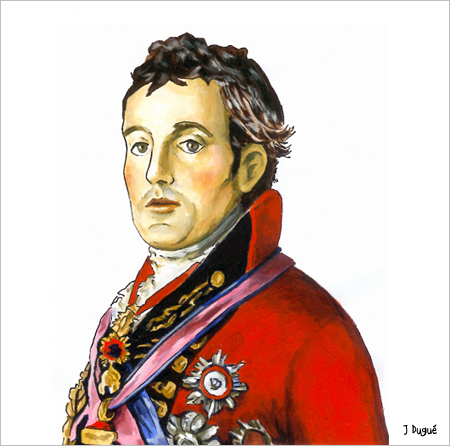 |
Historique Voir ICI
History Click HERE
Après la mort du 1er duc de Wellington en 1852, le gouvernement a annoncé qu'un un concours devait avoir lieu pour ériger un monument à sa mémoire dans la cathédrale St Paul. Malgré la victoire de William Calder Marshall (1813-1894) ce fut le modèle de Stevens,exposé au Westminster Hall, Londres, qui fut choisi( il avait terminé cinquième )
En effet ce monument s'intégrait mieux dans la cathédrane Le monument fut d'abord placé dans la Chapel of St Michael and St George pour être placé à sa position actuelle en 1906. Mais il ne fut inauguré qu'en 1912 soit 37 ans après la mort de l'artiste, . Il a étré aussi complété par Hugh Stannus (1840-1908) élève de Stevens
Ce monument fait référence aux dans sa conception aux monuments de la Renaissance italienne
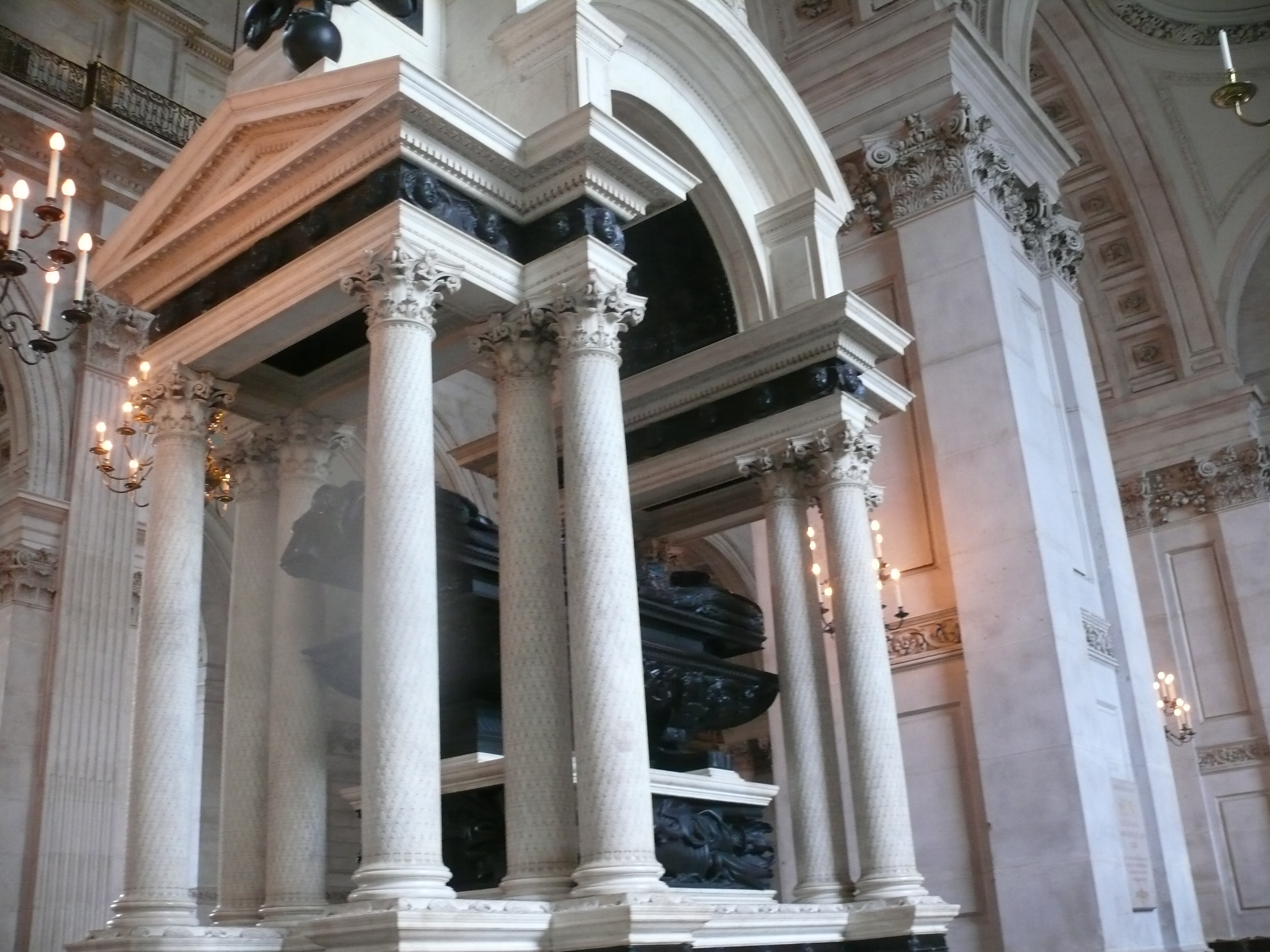 |
| Monument inspiration Renaissance |
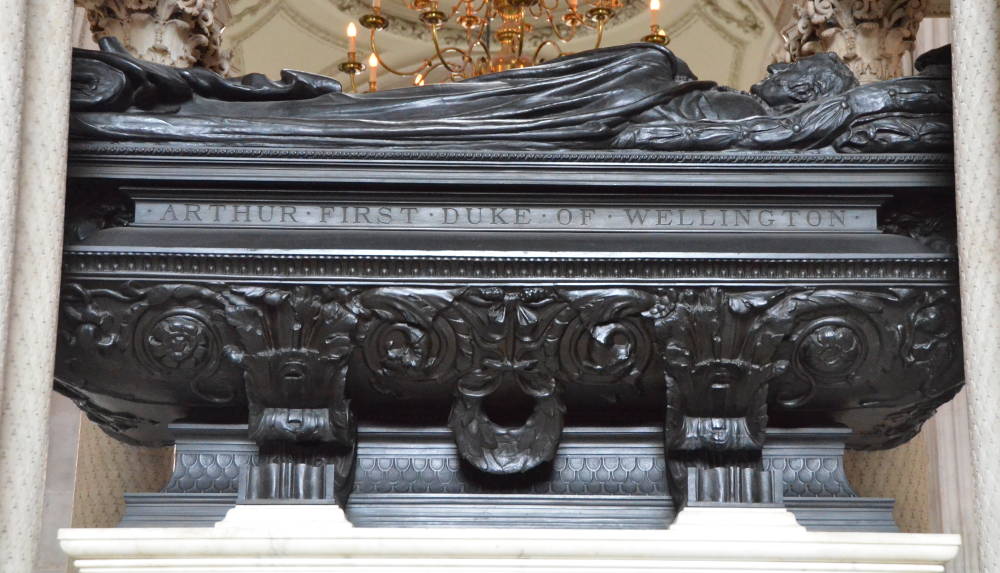 |
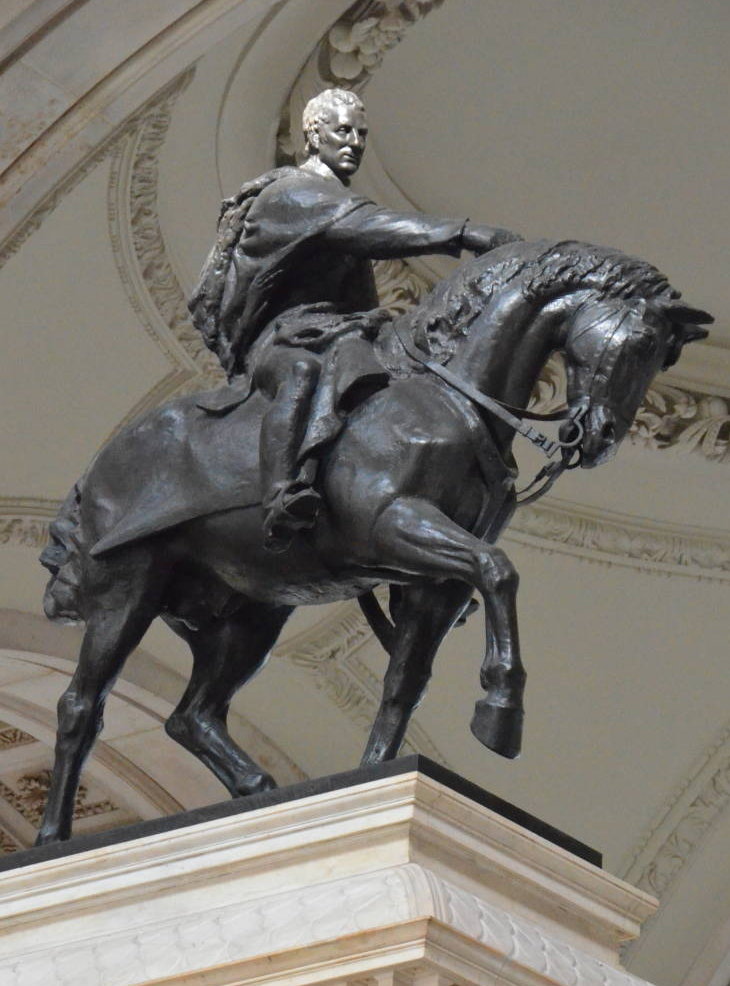 |
| Statue equestre exécutée entre 1899 et 199 par John Tweed sur dessins de Stevens |
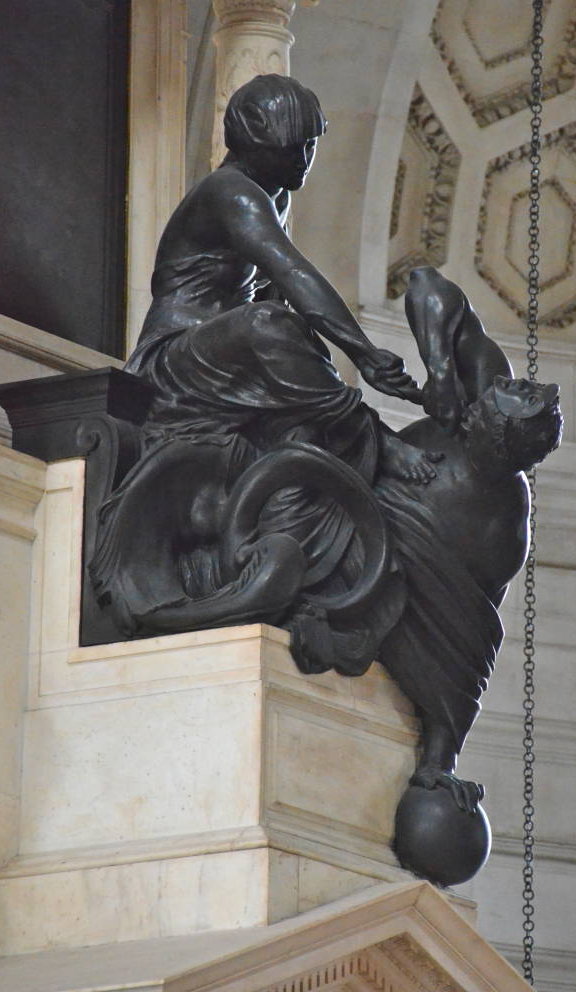 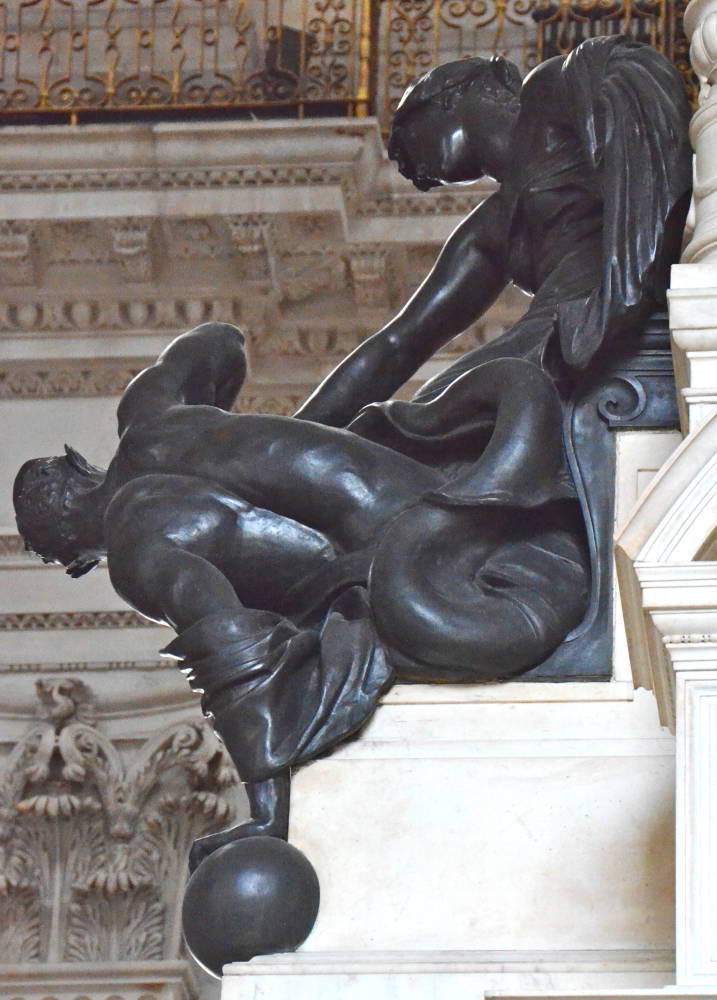 |
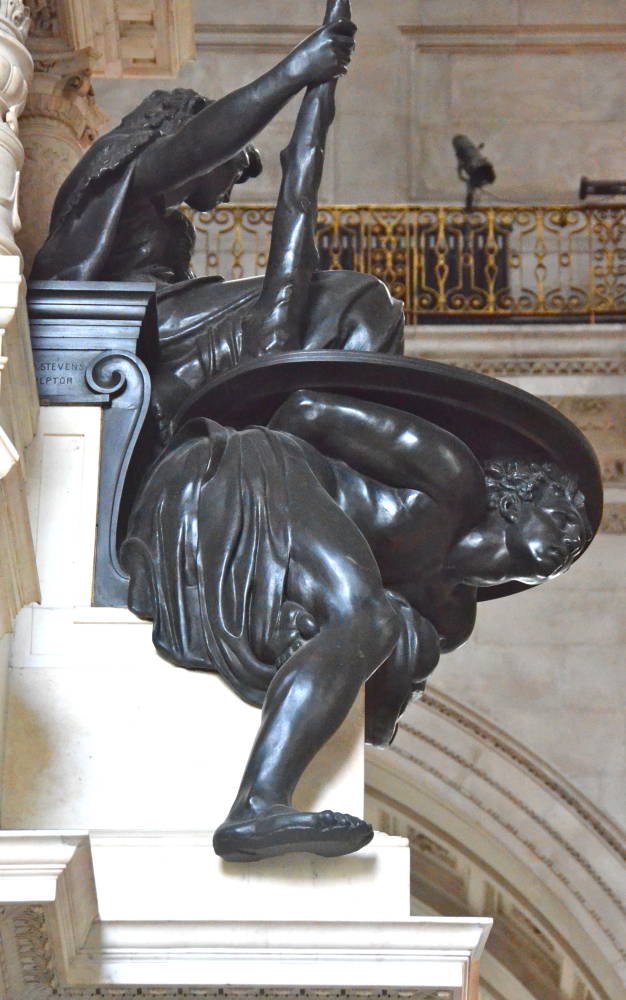 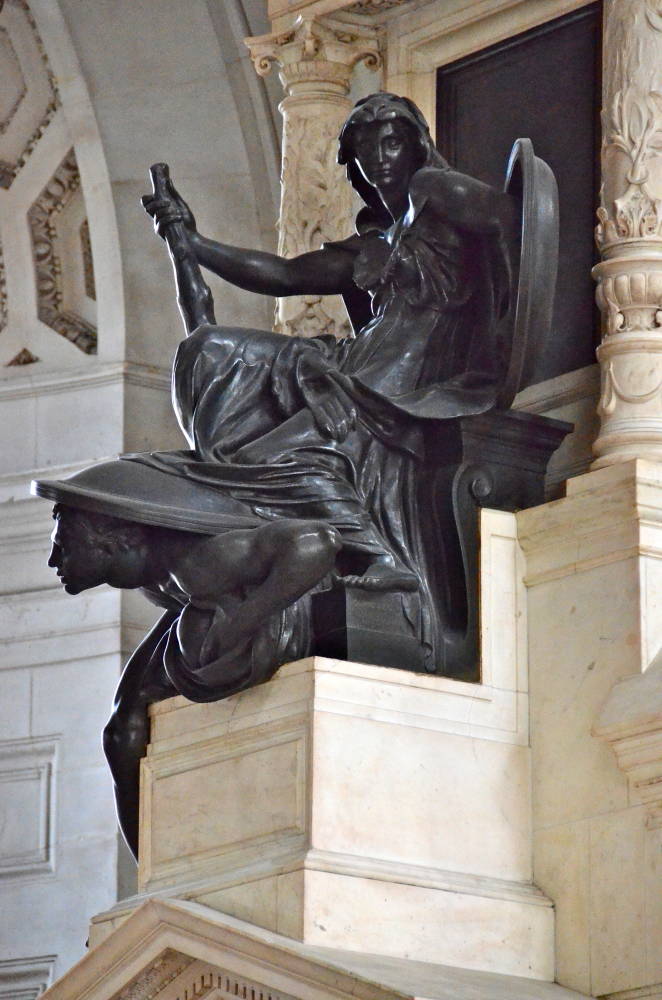 |
| Valeur terrassant la couardise |
Mais qui est cet Alfred Stevens ? C'etait l'un des sculpteurs les plus importants en Grande-Bretagne du XIXe siècle, et il a exécuté une grande variété de travaux . Il avait formé en Italie, travaillant d'abord à Florence, puis sous la direction de Bertel Thorvaldsen (1770-1844) à Rome. Il tenait en grande admiration Michel-Ange, mais il a également été influencé par des artistes florentins du XVeme siècle, comme Donatello.
Son style dynamique, qui était à la fois enracinée dans les traditions de la Renaissance italienne,
After the death of the 1st Duke of Wellington in 1852, the government announced that a competition was to be held for the design for a monument to commemorate him. This was Stevens's competitive sketch model, and was among those exhibited at Westminster Hall, London, in 1857. Although Stevens's model came fifth in the competition, which was won by William Calder Marshall (1813-1894), it was actually judged more suitable to the monument's setting, which was to be St Paul's Cathedral, and he was therefore awarded the commission. The monument stood originally in what is now the Chapel of St Michael and St George. It was was moved to its present site in 1906. 32 years after the artist's death, was completed by his pupil Hugh Stannus (1840-1908). Stevens had made some changes to the design, and the finished monument therefore differs in some respects from this model, but the general composition remained. The model is made from plaster and wax, with metal armatures; in form it echoes Italian Renaissance monuments.
Alfred Stevens was one of the most important sculptors in Britain in the 19th century, and executed a wide variety of work, including designs for silver and maiolica, firedogs and chimney-pieces, as well as sculpture. He had trained in Italy, working first in Florence, and then under Bertel Thorvaldsen (1770-1844) in Rome. He held a great admiration for Michelangelo, but was also influenced by Florentine artists of the 15th century, such as Donatello. His vibrant style, which was both rooted in the traditions of the Italian Renaissance, and new and naturalistic, exercised a strong influence on British sculptors towards the end of the 19th century, such as George Frampton (1860-1928) and Alfred Gilbert (1854-1934).
Voir Aussi Autres Photoscopes See Also Others Walk Around
Tombeau de Napoleon
Tombeau de Nelson Londres
Tombeau de Wellington